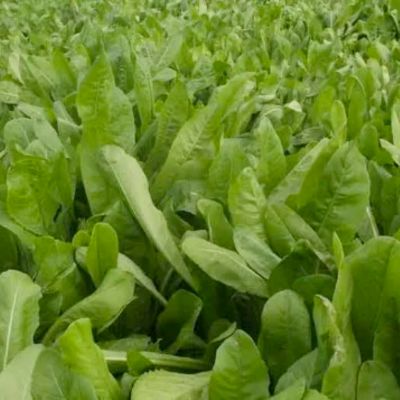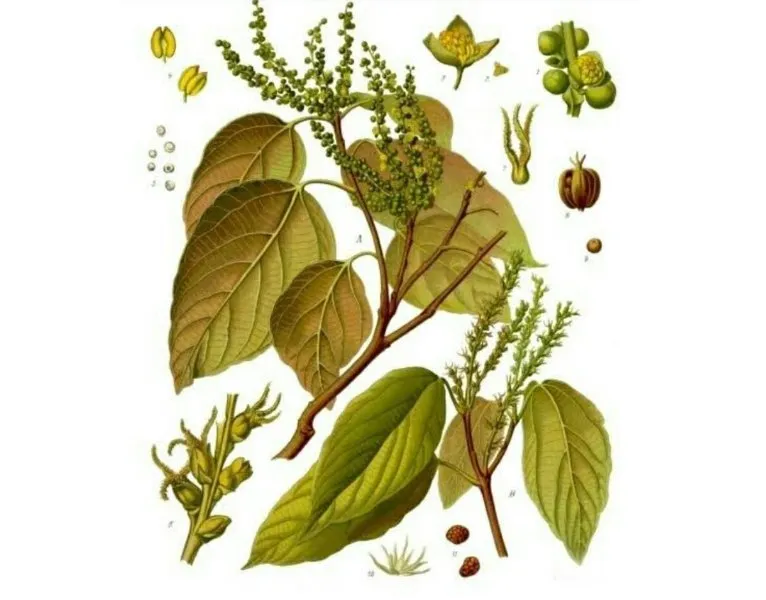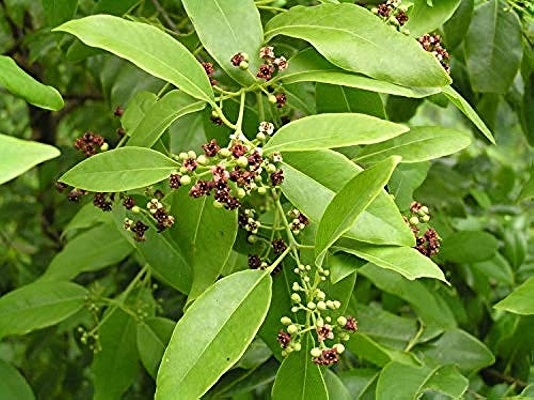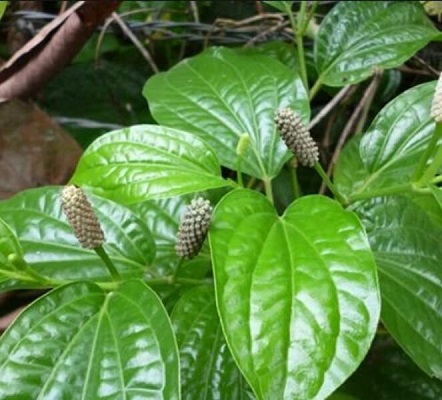On This Page
Kampillaka – Mallotus Philippinensis
Introduction
Kampillaka , commonly known as Indian Kamala or Rottlera tree is one of the most widely used andreadily available herb in Ayurveda. The name Kampillakaitself means that the plant is abundantlyavailablein many areas. The name Mallotusmeans that fruits have the shape resembling a melon. The plant is native to Philippines hence the species name. As mentioned earlier, it is one of the most readily available herb and have many therapeutic actions.
Dr.Gupta’s Institute of Applied Food Allergy, shortlyknown as IAFA ,has been consistently working on kampillaka to find out more medicinal properties of the plant. Our experts have successfully proven the activities like Cathartic, Purgative, Lithotriptic, anti-inflammatory, antimicrobial, digestant, and insecticidal properties of Kampillaka . The plant can be used to treat diseases like Skin disorders, Worm infestations, Cough, Itching, Fever etc. The ethanolic extracts of the plant have strong bactericidal activities and resists growth of many bacterial colonies. The stem bark of Kampillaka contains friedelane type triterpinoids and is responsible for the antioxidant activities of the plant.
Action of Kampillaka – Mallotus Philippinensisin Allergies
Our IAFA experts have successfully proven the antiallergic ,antimicrobial and anti-inflammatory properties of the plant Kampillaka. The plant contains phytoconstituents like lupeol, lupeol acetate, sitosterol and berginin and these helps in it’s antiallergic action. Decoction prepared from Kampillaka can be used to treat skin allergic conditions.
Vernacular Names
| Sanskrit Name | काम्पील, कर्कश, चन्द्र, रक्ताङ्ग और रोचन |
| Hindi Name | Kambila |
| English Name | Indian Kamala |
| Malayalam Name | Kampippala |
| Kannada Name | Chandrahittu |
| Marathi Name | Shendri |
Botanical Name
MallotusPhilippinensis
Family
Euphorbiaceae
Morphology of Kampillaka – Mallotus Philippinensis
- Small branched tree
- Leaves arranged alternately ,Ovate shape
- Inflorescence is long terminal spike
- Flowers are dioecious
- Fruits are capsule type
- Seeds are subglobose
Ayurveda reference of Kampillaka – Mallotus Philippinensis

Geographical distribution of Kampillaka – Mallotus Philippinensis
Kampillaka seen in South Indian states like Karnataka, Kerala, Tamilnadu & Andhra Pradesh also in West Bengal, Uttar Pradesh.
Phytoconstituents of Kampillaka – Mallotus Philippinensis
- Heart wood yielded lupeol, lupeol acetate, sitosterol and berginin.
- Bark consists acetylaleceritolic acid, a-amyrin, sitosterol and sitosterol glucoside,
- Seeds yielded bergenin, corotoxigenin-L-rhamnoside and coroglaucigenin-L-rhamnoside.
Parts used of Kampillaka – Mallotus Philippinensis
- Fruit
Dosage of Kampillaka – Mallotus Philippinensis
- Decoction (kwatha) – 60 ml
- Powder (churna)- 5 g
Medicinal Properties of Kampillaka – Mallotus Philippinensis
- Kushtaghna-alleviate skin disorders
- Krimighna – useful in worm infestations
- Kandughan- relieves itching
- Vishaghna – useful in poisoning
- Vranahara – useful in wounds
- Kasa hara – relieves cough
- Sulahara-relieves pain
- Sophahara – relieves swelling
- Swasahara – relieves asthma.

Have A Health Issue?
Consult Online
- Dr. Sahil Gupta (B.A.M.S., M.H.A.)
Ayurvedic Allergy Specialist
CEO & Founder of IAFA®
Home remedies of Kampillaka – Mallotus Philippinensis
Ayurveda is an ancient treatment system which ispurely based on naturally available herbs and materials for the purpose of alleviating diseases. The herbs used in Ayurvedic treatments are toxic free andhave no side effects at all. Kampillaka is one of the most commonly available herb and can be used to treat diseases like –
- In Worm infestations (Krimi) – Kampillaka fruits taken and powdered well. It is then taken internally at a dose of 5g along with Jaggery.
- In skin diseases (Kushta)– Finely powdered Kampillakais applied on skin along with ghee. It can alleviate skin diseases
- In Diabetes (Prameha) – Decoction prepared with Kampillaka and Amalaki can be used to control diabetes.
- In Wound(Vrana)- Oil processed with Kampillaka is applied on the skin. It can improve healing of wound.
- In Haematometra(Raktha gulma) – Kampillaka powder is mixed with sugar and honey and taken internally at a dose of 12g.
- In Fever (Jwara) – Decoction made with leaves of Kampillaka and Tulsi taken internally at a dose of 60 ml.
- In Inflammation (Sopha) – Paste prepared from Kampillakafruits and ghee is applied over the skin part.
- In Renal calculi (Asmari) – oral intake of Decoction prepared from the leaves of Kampillaka at a dose of 60ml per day will control Asmari.
IAFA, guided by Dr.Gupta mainly aims in promotion of Ayurvedic science . We use naturally available herbs to cure diseases especially allergic conditions. IAFA follows guidelines that are purely based on Ayurveda textbooks for treatment purposes. By consistently hard working, we are able to provide you risk free medicines.
Reach IAFA for safe herbal remedies for all your ailments!!!
Was this Page Helpful?
Read More Articles
-

Kasini (Cichorium intybus)
Kasini (Cichorium intybus) commonly known as Chicory is a perennial herb, with large…
-
-









